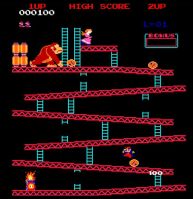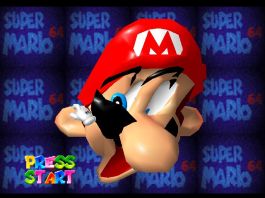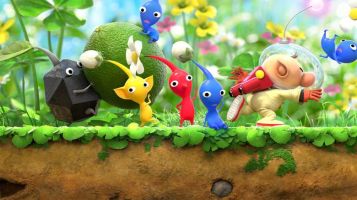Trending
Opinion: How will Project 2025 impact game developers?
The Heritage Foundation's manifesto for the possible next administration could do great harm to many, including large portions of the game development community.
If you play video games at all, odds are that you've played a game that was designed by Shigeru Miyamoto. But how does he do it? Let's find out in this week's "Game Designer Spotlight", looking at the history and design philosophy of Shigeru Miyamoto.

The following article is a reproduction. The original article, and many more, can be found at RemptonGames.com
What’s up designers, and welcome back to Rempton Games. In today’s episode of Game Designer Spotlight, we will be looking at the legendary designer behind some of Nintendo’s biggest franchises – Shigeru Miyamoto. We will look at his history, the design philosophy he used to design games like Super Mario Bros, The Legend of Zelda, Donkey Kong, Pikmin, and many more.
Before we talk about that, though, I just really quickly want to thank all of you watching. You may have noticed that this channel has recently passed 1000 subscribers! I am so grateful to every one of you who have subscribed, and I’m so excited to see how this channel grows. However, I also know that over 90% of my audience ISN’T subscribed, so if you haven’t yet I would really appreciate it if you could like and subscribe to this video, and keep helping this channel grow. Who knows – one day we might even hit 2000!
With that out of the way, let’s talk game design.
Before Shigeru Miyamoto was one of the world’s leading game designers, he was a small child living in Sonobe, Japan. As a child, Shigeru loved to explore the world, both indoors and outdoors. Whether it was running around the maze of sliding walls in his home, or plucking up the courage to explore one of the many caves that dotted the landscape, Shigeru let his imagination run wild.

In addition to his adventuring, Shigeru also began to develop a love of art, especially Manga. It may have been this love that led to him to get a design degree. Not a degree in video game design – that wouldn’t be possible for a few more decades – but an industrial design degree. However, after graduating Shigeru had no job lined up, and still wasn’t sure what he wanted to do with his life. It was at this uncertain time in his young life that his father helped him to get an interview with a relatively small Japanese toy company known as Nintendo.
Miyamoto interviewed with Nintendo’s President, Hiroshi Yamauchi, and was hired after showing him some toys that he had created. Miyamoto quickly became Nintendo’s first artist. During this time, Nintendo was just barely beginning to get into the video game business, and Miyamoto was responsible for a lot of early artwork, including pixel art and even helping design the arcade cabinets themselves.
Unfortunately, however, not all of Nintendo’s early video game efforts were successful. One particular flop – a game known as Radar Scope – was not selling as well as expected. In an attempt to offload a number of unsold Radar Scope cabinets, Miyamoto was tasked with converting these cabinets into a brand new game.
Miyamoto, being an artist and not an engineer, decided to start designing the story first. He chose to base the story of the game off of the love triangle found in Popeye – the hero Popeye and brutish Bluto both fighting for the attention of Olive Oyl.
This decision was likely inspired by the release of the Popeye movie in 1980, starring Robin Williams. This marks the second time that Robin Williams appears in the game designer spotlight series! He also happens to be my favorite actor of all time
However, when Nintendo was unable to get the license for Popeye the characters were changed – Popeye became a generic carpenter, Olive Oyl became the carpenter’s girlfriend, and Bluto was turned into a gorilla, from which the carpenter’s girlfriend would have to be rescued.
While it might not sound like much, this is quite possibly the first instance of an arcade game being designed story-first. Up until this point games were mostly driven by programmers, and the story tended to be tacked on at the end after the game was programmed. Simply by starting from a different perspective, Miyamoto had already begun to change the gaming industry.
While Miyamoto’s outsider perspective helped him see a different side of games, his lack of technical knowledge also got him into trouble while developing this game. He would often come up with a mechanical idea, such as having his character be launched by a see-saw, only to be told by the technical team that such a thing was not possible. However, despite this tension between the creative and technical visions, the game did eventually end up getting finished.

The last thing the game needed before being shipped out was a name. When choosing a name for the game, Miyamoto wanted to convey the idea of a stubborn ape, due to the game’s primary antagonist. He chose the word Donkey because it represented stubbornness, and the word Kong because of its connection to the giant gorilla in King Kong. And thus, Donkey Kong the stubborn ape was born!
Donkey Kong became a massive hit, and led to more game design opportunities for Miyamoto. The carpenter from Donkey Kong would go on to be the villain of the sequel game – Donkey Kong Jr. – before starring in a little known indie title called Mario Bros.However, Nintendo quickly realized that it’s future was not in arcade cabinets, and began to develop its first home console – a device known in Japan as the Family Computer (or FamiCom), and in North America as the “Nintendo Entertainment System” – NES for short. Miyamoto would be involved in designing a launch title for this new system – a game known as Super Mario Bros.
This console, and this game in particular, would help catapult Nintendo into becoming one of the giants of the video game industry, and Miyamoto with it. During the NES era Miyamoto helped develop a number of other classic games, including Kid Icarus, Ice Climbers, and Excitebike. However, perhaps his greatest achievement on this early console was a game he created based on his experiences running around and exploring the countryside – a game called The Legend of Zelda.
Fun fact: Robin Williams actually named his daughter Zelda after princess Zelda!
Throughout the years, Miyamoto has continued to innovate and shape not only Nintendo but video games as a whole. He has been involved in classic games from every era, and has helped launch consoles from every generation. During the Super Nintendo era he helped create the Star Fox and F-Zero series of games, and helped design the Super Nintendo controller with its innovative left and right bumper controls.
During the Nintendo 64 era, Miyamoto was instrumental in helping Nintendo make the switch from 2D to 3D. He supervised the creation of Super Mario 64, with its innovative camera controls and open 3D environments. He also led the design of Legend of Zelda: Ocarina of Time, which helped pioneer such features as the ability to lock onto enemies and context-sensitive controls.

Miyamoto has helped guide Nintendo for over 30 years, and he still hasn’t stopped innovating. He is still helping produce some of the biggest franchise games in the world, such as Breath of the Wild and Mario Odyssey, as well as creating new franchises including Splatoon and Arms. His contributions are innumerable, and it is very possible that without him, Nintendo would not be the industry titan that it is today.
Now that we’ve learned a bit about his history, let’s look at how Miyamoto actually designs game. Miyamoto is pretty unique among game designers for the wide variety of games that he has been involved with. From puzzles to platformers, shooters to sports, Shigeru Miyamoto has helped design almost any kind of game you can think of. Yet, despite the vast differences between these games, they are all bound together by Miyamoto’s unique philosophy of game design.
Firstly, Miyamoto does not believe in following the industry. He doesn’t design games simply to follow trends, or make design decisions based on focus groups. Instead, he tries to make the types of games that he himself would like to play. He believes that if he himself finds the game to be fun, others will as well.

Because of this, many of Miyamoto’s games can be seen as autobiographical. The Legend of Zelda, for example, was designed as one of the very first open-world games to mimic the sense of exploration that Miyamoto felt while exploring the great outdoors. This is a common theme with his games – Nintendogs for example was inspired by his experiences with dogs and dog owners, and Wii Fit was inspired by his attempts to get healthy and exercise.
Another common trait in his games is trying to make them playable by anybody, of any skill level. To achieve this, Miyamoto believes that the controls should be intuitive and easy to pick up. This design philosophy has not only guided the development of his games, but the Nintendo hardware itself. This principle of intuitive controls has guided the design of Nintendo’s controllers since the Super Nintendo, and led to innovations such as the N64’s thumb stick and the Wii’s motion controls.
Easy to learn controls does not necessarily translate into easy games, however. Miyamoto has stated that one of the most important parts of a game is a sense of accomplishment and achievement, and a game can only truly generate this feeling if the player is forced to overcome a real challenge.
The key, as with everything in life, is to find the right balance. Games need to be easy enough that anybody can learn them, but challenging enough that players need to work hard to complete them. Games need to provide a balance between constantly introducing new challenges for the player, as well as providing moments of ease and repetition so the player can relax and breathe.
Another area where games require balance is in the amount of information that is provided to the players. If players are given too much information, this removes the opportunity for them to experiment, explore, and figure things out for themselves. However, if they are not given enough information they may get stuck and not have a clue what to do.
Miyamoto has also said that he tries to create a feeling of immersion in his games, and one of the most important ways to create this feeling is through fun, responsive movement. It has been said that when designing Super Mario 64, Miyamoto would spend hours just having Mario run around an empty world to make sure that controlling him would feel natural to the players, and when testing Breath of the wild he spent hours just running around and climbing trees. In fact, designing fun movement in games is such an important topic that I’ve already made an entire video about it, which you can find by clicking here.

Another important aspect of controlling the character is making them feel real. To Miyamoto, characters need to feel like they actually exist – like they have weight and momentum. This is why Mario slides a little after landing a jump, and when you quickly change direction you can feel the momentum shift.
Finally, Miyamoto has said that the key to design is to put yourself in the player’s shoes and try to see the game from a new player’s perspective. When a game designer plays a game that they made they are experts by default, and that can make it difficult to determine how a new player would actually handle the game. To counteract this, Miyamoto has suggested developers switch their right and left hands while playing, to simulate the difficulty of being a new player.
This philosophy doesn’t just apply to controls, but also to how players collect information about the game. “Sometimes the test players complain that there are too many enemies in one stage. And when I approach the designer of that scene with that kind of complaint sometimes he or she says, ‘Oh, maybe they couldn’t find the stars at the beginning. As soon as they find out that the star makes you invincible, it’s more joy.’ And the developer insists that hiding the star in the beginning is going to be great. But if game players don’t understand this, and they can’t find the star, then the game doesn’t make sense at all.”
As a designer, you not only probably have played a ton of games before, but you know your own game inside and out. That can make it easy to lose perspective – what seems obvious to you isn’t necessarily so obvious to everyone else. The only way you can really know what your players are thinking and feeling when they play your game is by watching and really listening to your audience.
With a 40 year history and dozens, if not hundreds, of games under his belt, I could go on and on about Shigeru Miyamoto, but that’s where I’m going to leave it for this week. If you liked this video make sure to leave a like, and subscribe so you don’t miss more videos like this in the future. If you want to see more, check out the rest of my Game Designer spotlight series – I have entries on Sid Meier and Richard Garfield, with more on the way. And join me next week for the first official episode of my trivia gameshow – triviarena. We have some great contestants lined up, and its going to be a really fun match. Until then, thank you so much for watching and I’ll see you all next time.
Read more about:
BlogsYou May Also Like